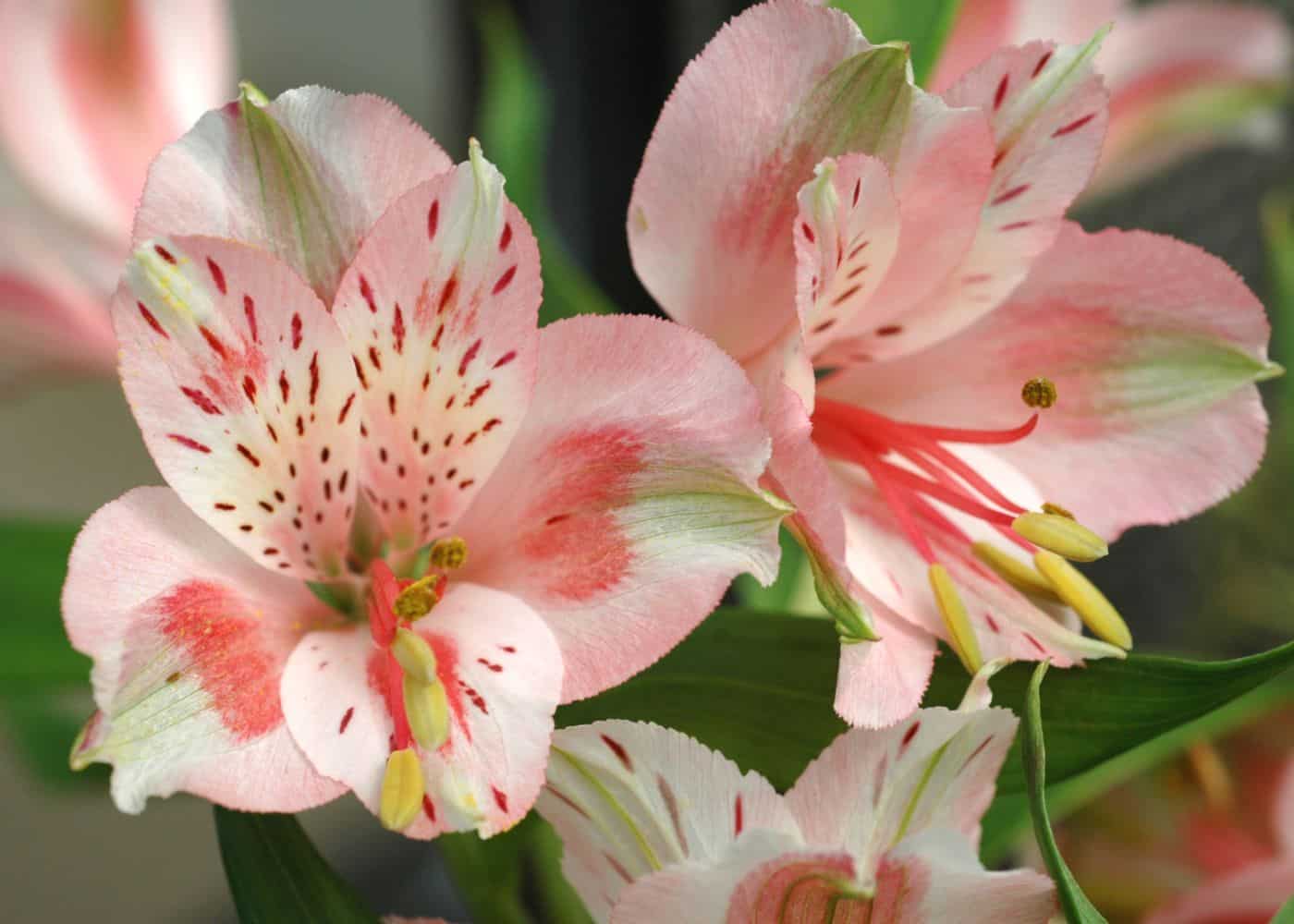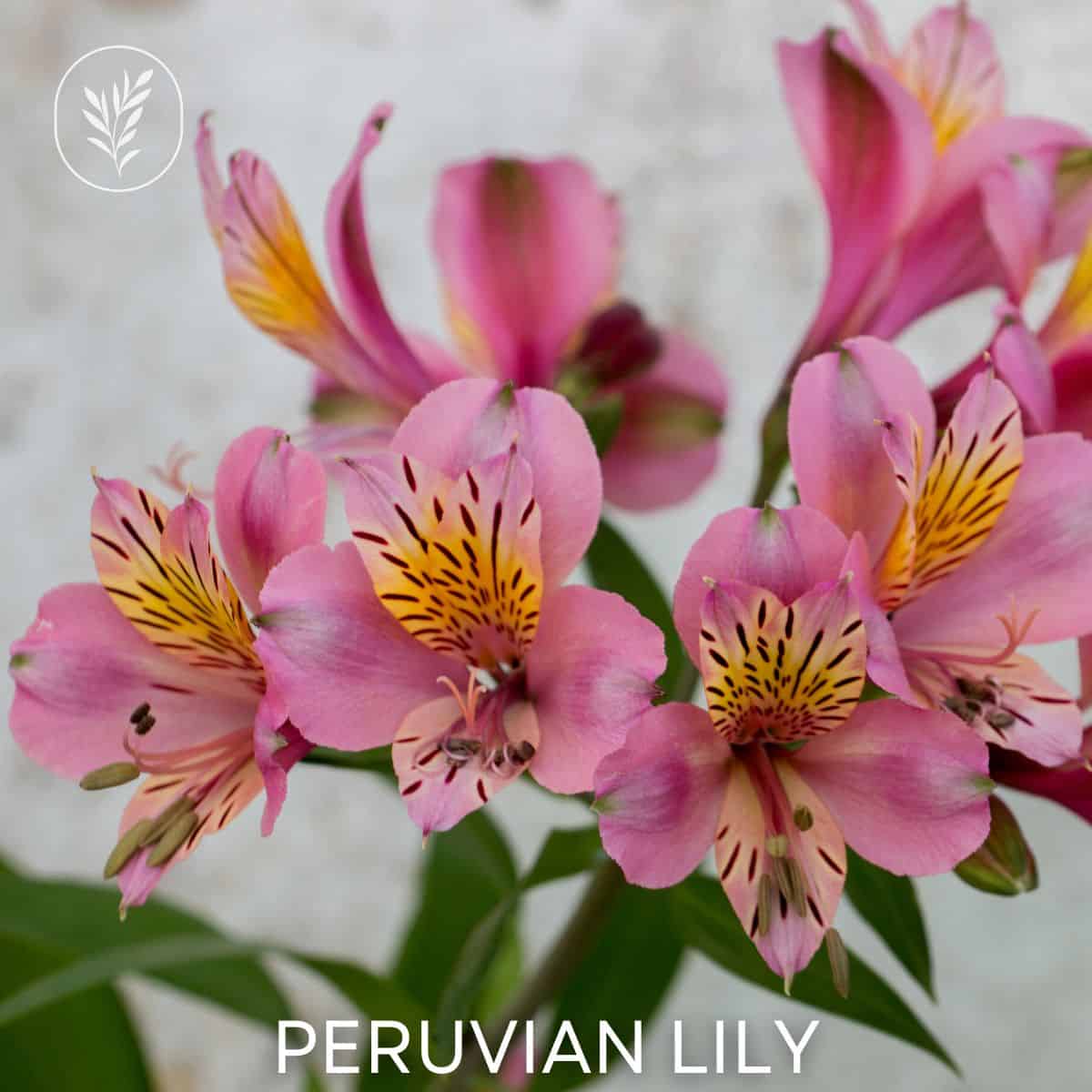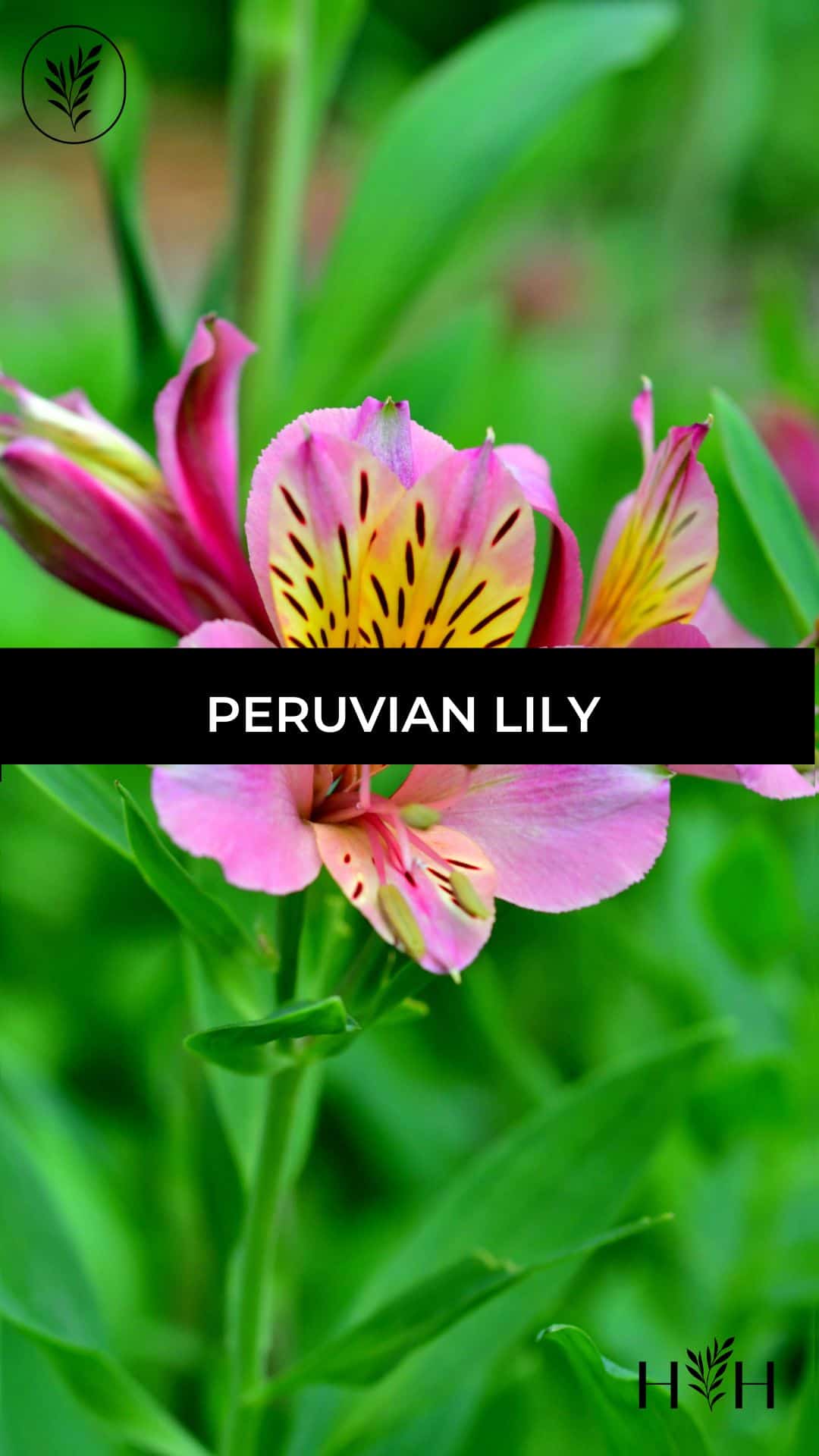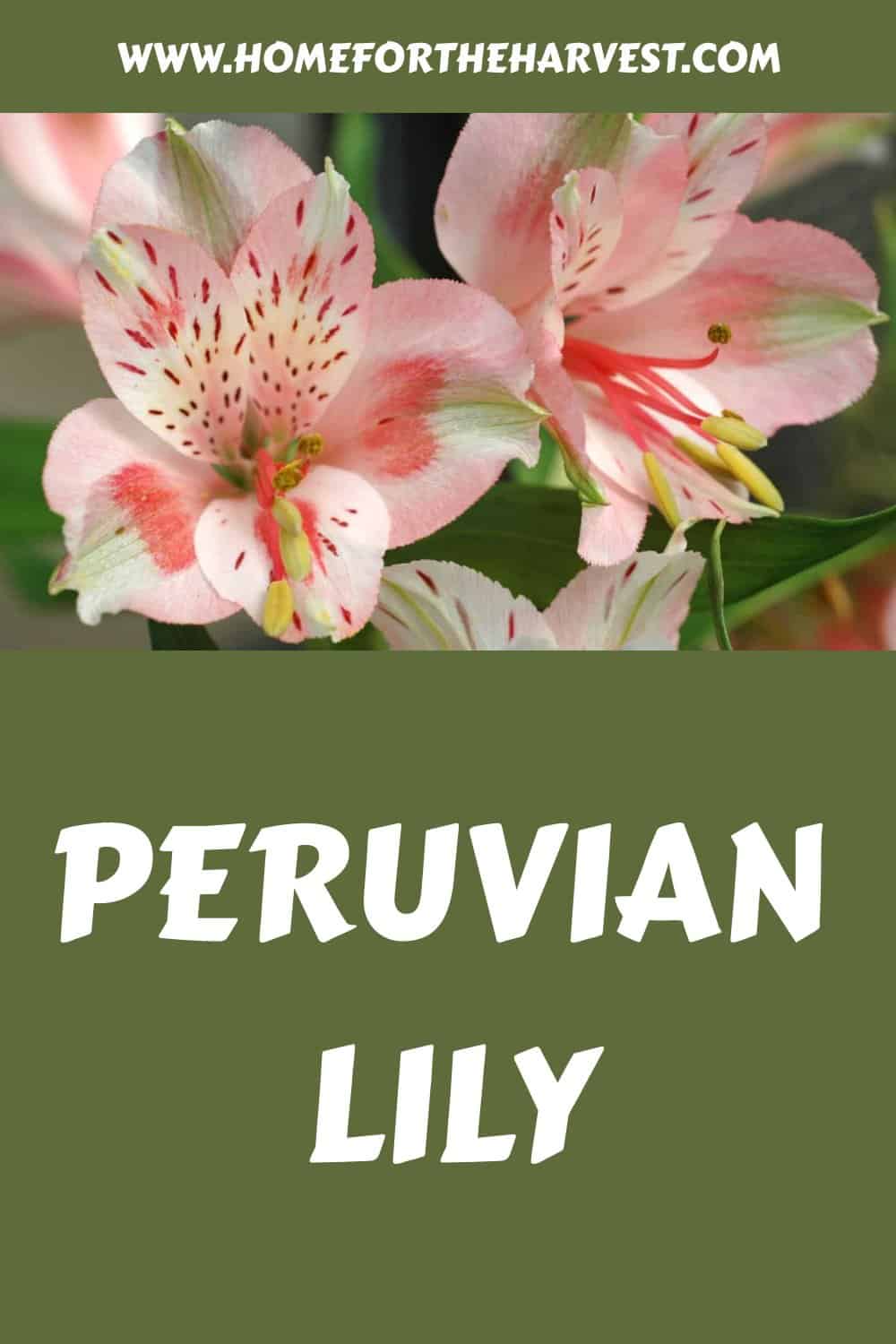Do you want to bring a bit of South America into your garden? Look no further than the beautiful Peruvian lily. This exotic flower is native to S. Venezuela and S. South America, but it can easily be grown in North American gardens with proper care!
Peruvian lily (Alstroemeria) is a flowering herbaceous perennial plant known for its clusters of exotic colorful flowers. The funnel-shaped flowers are typically yellow, orange, or pink and have elegant brown freckles. The plant grows from tuberous roots and has a very long blooming season, typically lasting through summer and into fall.
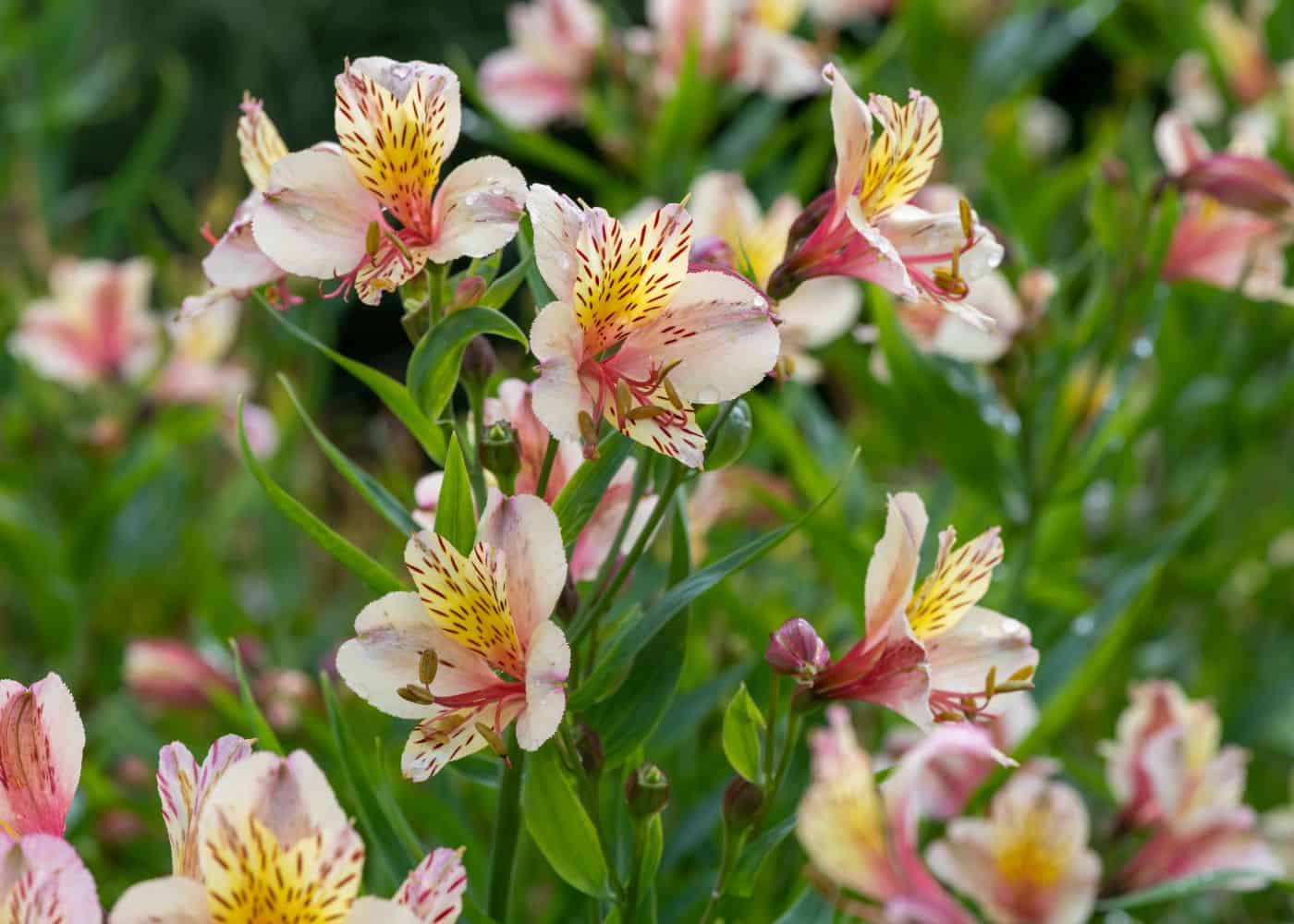
Peruvian lily basics
Peruvian lily (Alstroemeria) is a genus of flowering plants native to South America. It belongs to the family Alstroemeriaceae and includes over 50 species. Also called the lily of the Incas, the flowers are typically bright and showy, ranging in color from white to pink, orange, yellow, red, or purple. They can be found growing wild in many parts of Peru as well as other countries in South America, such as Argentina and Chile.
Most species of Peruvian lily can be grown as perennials in USDA Zones 5-9. The plants typically reach heights of 1-2 feet tall with many branching stems. The leaves are usually green or grayish-green in color and have a glossy sheen to them.
Like growing true lilies, Peruvian lilies grow best in full sun but will tolerate some shade. It prefers moist soil that is rich in organic matter and drains well. Its stems can reach up to 3 feet tall with long leaves that are usually green or gray-green on top but may have a purplish underside when grown under certain conditions. The flowers grow at the end of each stem and bloom from late spring through early summer, depending on the variety.
These plants are often used for cut flower arrangements due to their beautiful clusters of blooms, which last up to two weeks when properly cared for indoors and out of direct sunlight outdoors. Additionally, they make great additions to any garden bed because they come back year after year with minimal effort required from the gardener.
Peruvian lilies are often used as cut flowers due to their vibrant colors and long vase life when properly cared for after cutting from the stem. They also make excellent additions to gardens where they will attract hummingbirds, butterflies, and other pollinators looking for nectar sources throughout spring into early autumn, depending on climate conditions.
The flowers of the Peruvian lily have a funnel shape and come in an array of colors, including pink, purple, yellow, orange, red, and white. They can be single or double blooms with six petals each. Each flower lasts about one week before it wilts away, but new buds quickly replace them so that the plant remains in bloom for several months at a time during summer and fall months.
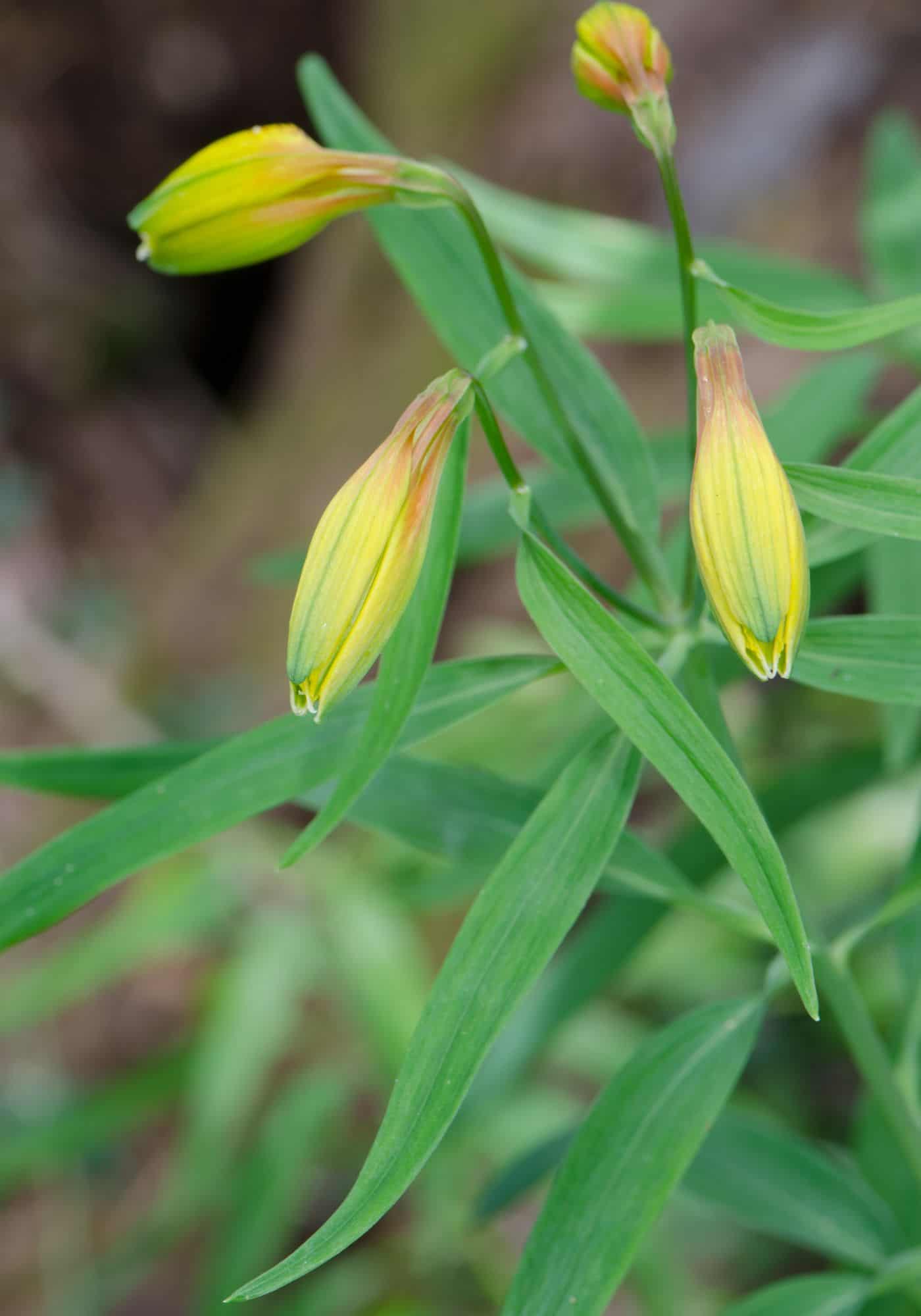
Planting Peruvian lily plants
Planting a Peruvian lily is easy and rewarding. The key to success is to choose the right location, prepare the soil properly, and provide plenty of water.
First, pick a spot that gets at least 6 hours of direct sunlight each day. If you live in an area with hot summers, look for a place with some afternoon shade as well. Make sure the soil drains well; if it doesn’t, consider planting your lilies in raised beds or containers instead.
Once you have chosen your spot, dig up the soil to about 2-3 inches deep and place the bulbs with the eyes just below the soil line. The “eyes” are the growing buds on the roots, and they should be placed at the top as the eyes will sprout up to become stems. Don’t plant the roots deeper than that, or they may have trouble flowering. Water thoroughly after planting and keep them moist until they start sprouting leaves in late spring or early summer.
To ensure healthy growth throughout the season, feed your plants every few weeks with an all-purpose fertilizer designed for flowering plants. Be sure not to overfertilize, as this can cause root burn or other damage to your flowers. Also, be sure to deadhead spent blooms regularly so that new ones will continue growing throughout the season.
Finally, remember that Peruvian lilies need regular watering during dry spells but don’t want their roots sitting in soggy soil – make sure there is good drainage around them. With these simple tips, you should have no problem getting beautiful blooms from your Peruvian lily plants year after year.
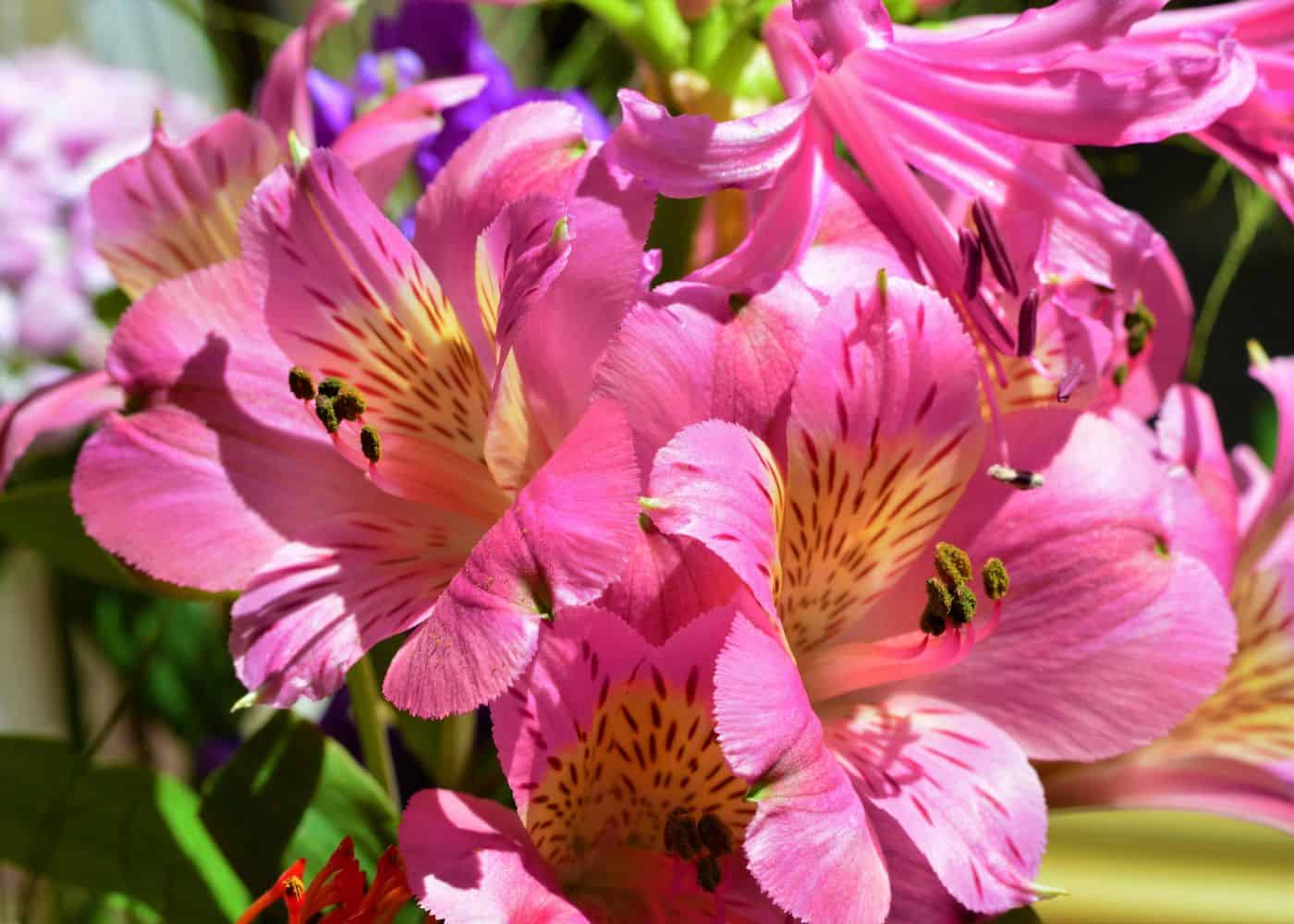
Caring for Peruvian lily plants
Caring for Peruvian lily plants is not difficult and can be done with minimal effort. With the right conditions, these plants will thrive in your garden or home. Here are some tips to help you get started:
Watering
Peruvian lilies need regular watering but should never be over-watered. Water them once a week during the growing season and every two weeks during winter months when they are dormant (unless the soil is frozen). Make sure to water at the base of the plant rather than from above, as this can cause disease problems.
Fertilizing
Fertilize your Peruvian lilies twice a year using a balanced fertilizer sprinkled into the soil around each plant’s roots. This will provide essential nutrients that promote healthy growth and blooms throughout the season.
Pruning
Prune your Peruvian lilies after flowering has finished in order to keep them looking their best and encourage new growth for next year’s flowers. Cut off any dead or damaged stems and remove spent flower heads before they go to seed, which can spread unwanted weeds in your garden beds.
Mulching
Mulch around each of your Peruvian lily plants with organic material such as compost or bark chips to help retain moisture in hot weather, reduce weed competition, and add nutrients back into the soil over time as it breaks down naturally.
Place your Peruvian lilies where they will receive full sun for most of the day, but avoid direct afternoon sunlight, as this may scorch their leaves if temperatures rise too high during summer months. They also prefer slightly acidic soils, so make sure to check pH levels before planting if possible.
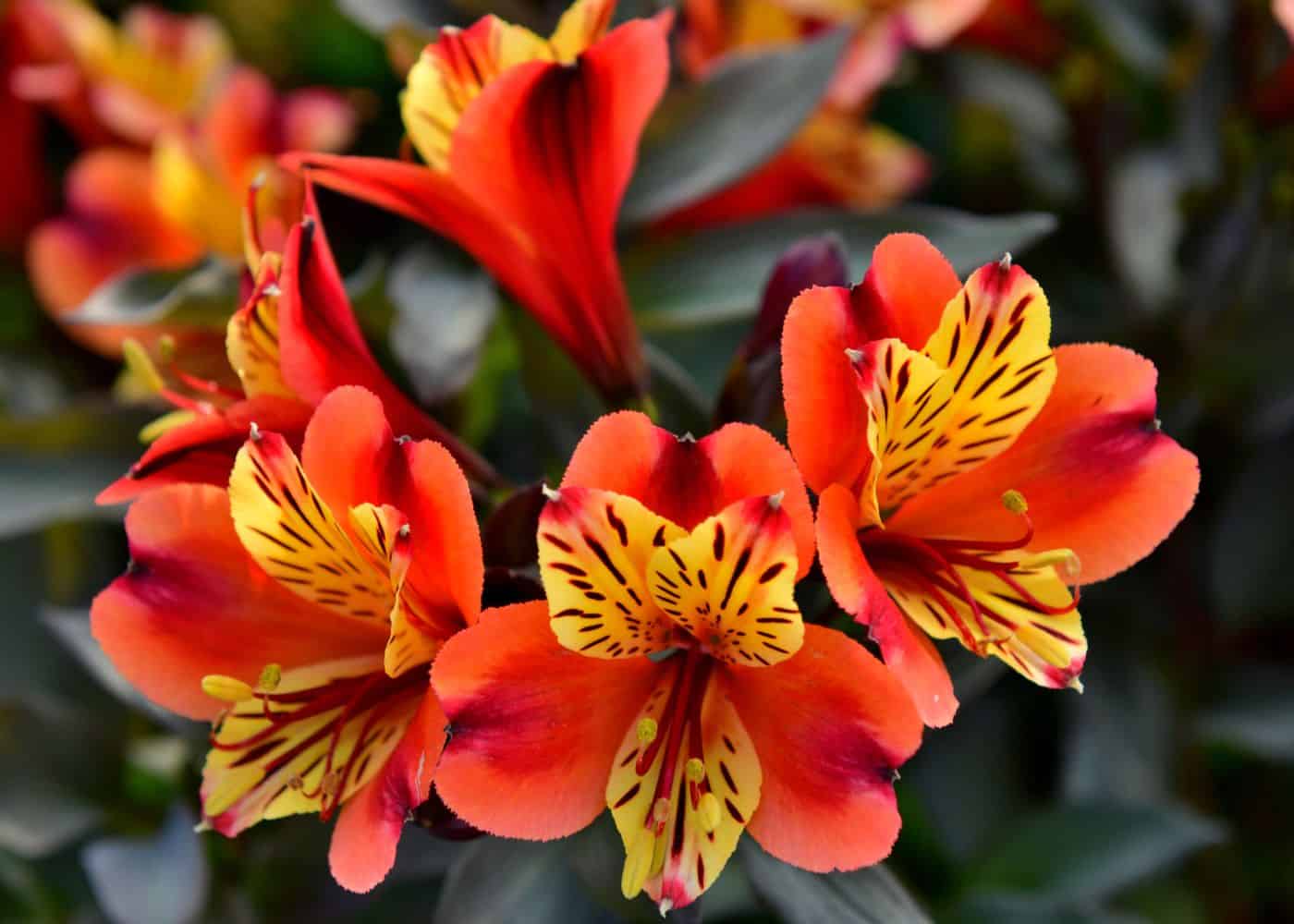
Propagation
Propagating a Peruvian lily is an easy and rewarding task. The most common method of propagation is division, which involves splitting the root system into two or more parts. To do this, carefully dig up the plant and gently separate the roots with your hands. Replant each section in its own pot filled with well-draining soil mix. Water thoroughly after planting to help settle the soil around the roots.
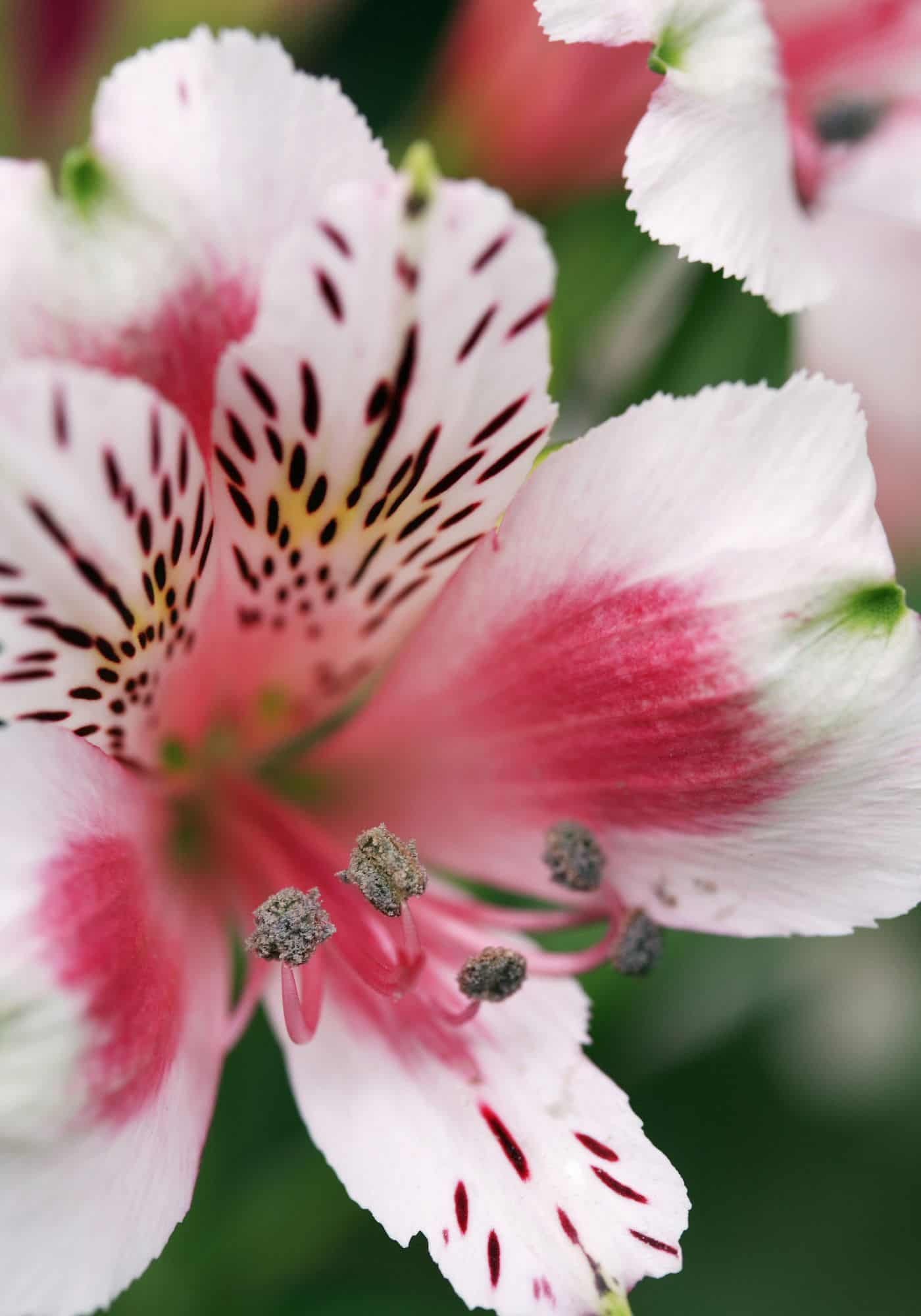
Pests & diseases
Peruvian lily can be affected by a few common plant pests and diseases.
Common pests
Common pests that can affect a Peruvian lily include aphids, mealybugs, and spider mites. Aphids are small insects that feed on the sap of plants and cause the yellowing or curling of leaves. Mealybugs look like white cottony masses on stems and leaves, which can cause wilting or stunted growth. Spider mites are tiny red spiders that spin webs between plant parts and suck out their juices, resulting in discolored foliage.
The best way to prevent pests from affecting your Peruvian lilies is to keep them strong and healthy by providing adequate water and nutrients, as well as ensuring good air circulation around the plants. Inspect your plants regularly for signs of pest infestation, such as webbing or discoloration, so you can take action quickly if needed.
If an infestation does occur, it’s important to treat it promptly with organic insecticidal soap or neem oil before it spreads too far throughout the garden. You may also want to consider introducing beneficial predators such as ladybugs into your garden, which will help control any pest populations naturally without harming other beneficial insects in the area.
Diseases
Like all plants, the lily of the Incas is susceptible to certain diseases. Fungal diseases are most common, but there are also viral diseases that can affect these plants.
Peruvian lilies are often affected by fungal diseases like Botrytis blight and rust. Botrytis blight, caused by the fungus Botrytis cinerea, leads to brown spots on leaves and flowers and in severe cases, can cause the entire plant to wilt and die. Rust, another common issue, appears as orange or yellow pustules on the undersides of leaves. Good air circulation, avoiding overhead watering, and removing affected plant parts help manage fungal diseases.
Overwatering or poorly drained soil can lead to root rot in Peruvian lilies, which is caused by fungi like Phytophthora or Pythium. This disease results in yellowing leaves, stunted growth, and black, mushy roots. Ensuring good drainage and avoiding overwatering are key preventive measures.
Peruvian lilies can also be affected by viral diseases such as the tomato-spotted wilt virus. Symptoms include stunted growth, yellowing of leaves, and brown rings on the foliage. Insects typically spread viruses, so controlling pests is crucial in managing these diseases. You’ll also want to purchase your plants from a trusted nursery that takes disease management seriously.
For all these diseases, the best defense is a good offense: proper care and maintenance. This includes planting in well-drained soil, ensuring adequate spacing for air circulation, and practicing good sanitation by removing diseased plant parts and debris from the garden. Regular inspections of your plants for early signs of disease can also help in taking timely action to prevent the spread.
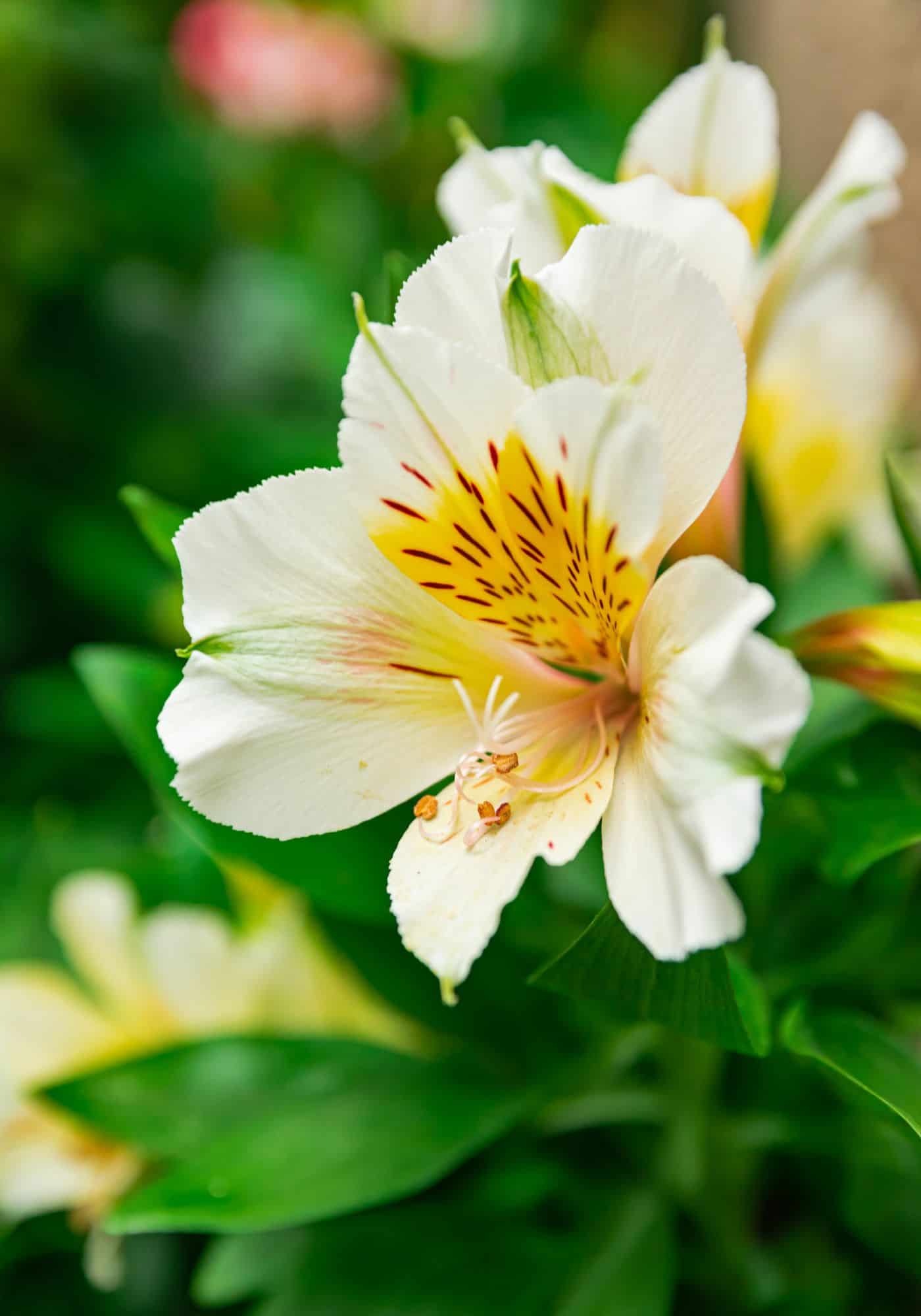
FAQs about the Peruvian lily
Do Peruvian lilies come back every year?
Yes, Peruvian lilies (Alstroemeria) are perennial plants in their native climate, and the tuberous roots live for many years. The plants can typically survive for multiple years in Zones 5-9. They can also be grown in Zones 3-4 if the roots are lifted and stored indoors each fall (like dahlias or gladiolus bulbs).
Will Peruvian lily survive winter?
Yes, Peruvian lilies are hardy plants that can survive cold winter temperatures. These plants are usually winter hardy down to USDA Zone 5. They may be killed by colder winters (Zones 3-4) and should be dug up and stored like canna tubers in those climates. With proper care and maintenance, Peruvian lilies will thrive through the winter months and provide beautiful blooms in springtime.
Do Peruvian lilies need full sun?
Peruvian lilies, also known as Alstroemeria, generally prefer full sun (6 or more hours of direct sunlight) to bloom at their best. In the hottest zones, they do best in a spot that receives morning sun and afternoon shade. However, they can tolerate direct sun all day if given adequate water and soil moisture.
Are Peruvian lilies invasive?
No, Peruvian lilies (Alstroemeria) are generally not considered invasive. They can spread quickly in the right conditions, but they don’t typically outcompete native plants or take over an area. Be sure to check your local invasive plant listings and regulations, though, as they can differ widely between regions.
Before you go…
Peruvian lily is a beautiful and easy-to-care-for plant that can bring beauty and joy to any garden. With its bright colors, long-lasting blooms, and low maintenance requirements, it’s no wonder why this flower has become so popular among gardeners.


